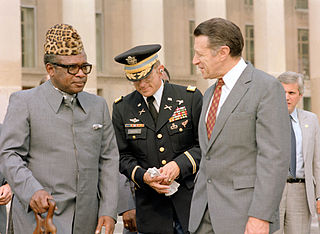 W
WThe abacost, a blending of the French "à bas le costume", was the distinctive clothing for men that was promoted by Mobutu Sese Seko as part of his authenticité programme in Zaire, between 1972 and 1990. Zairians were banned from wearing Western-style suits with shirt and tie to symbolise the break with their colonial past. The abacost was a lightweight suit, worn without a tie, though sometimes with a cravat. It closely resembled a Mao suit. It was seen in long-sleeved and short-sleeved versions.
 W
WAn armband is a piece of material worn around the arm over the sleeve or other clothing if present. They may be worn for pure ornamentation, or to mark the wearer as belonging to group, or as insignia having a certain rank, status, office or role, or being in a particular state or condition. Sprung armbands, known as sleeve garters, have been used by men to keep overlong sleeves from dropping over the hands and thereby interfering with their use. Armbands may also refer to inflatable armbands used to assist flotation for swimmers or for use with sphygmomanometers, in which case they are generally referred to as cuffs.
 W
WThe black beret is a type of headgear. It is commonly worn by paramilitaries and militaries around the world, particularly armored forces such as the British Army's Royal Tank Regiment (RTR), the Royal Canadian Armoured Corps (RCAC), and the Royal Australian Armoured Corps (RAAC). Notable non-armored military units to wear the black beret include the non-military police and non-special forces elements of the Irish Defence Forces, Russian Naval Infantry and Russian OMON units, the United States Air Force (USAF) Tactical Air Control Party (TACP), Philippine National Police-Special Action Force (PNP-SAF) members, and the Royal Canadian Navy. It was also worn by the United Kingdom's Royal Observer Corps (ROC) with their Royal Air Force (RAF) uniform, Metropolitan Manila Development Authority (MMDA).
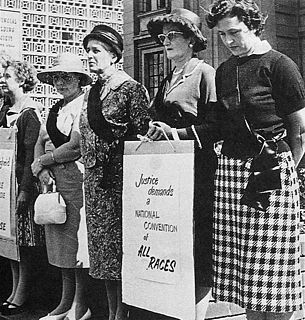 W
WThe Black Sash is a South African human rights organisation. It was founded in Johannesburg in 1955 as a non-violent resistance organisation for liberal white women.
 W
WThe Voluntary Militia for National Security, commonly called the Blackshirts or squadristi, was originally the paramilitary wing of the National Fascist Party, known as the Squadrismo, and after 1923 an all-volunteer militia of the Kingdom of Italy under Fascist rule, similar to the SA in Nazi Germany. Its members were distinguished by their black uniforms and their loyalty to Benito Mussolini, the Duce (leader) of Fascism, to whom they swore an oath. The founders of the paramilitary groups were nationalist intellectuals, former army officers and young landowners opposing peasants' and country labourers' unions. Their methods became harsher as Mussolini's power grew, and they used violence and intimidation against Mussolini's opponents. In 1943, following the fall of the Fascist regime, the MVSN was integrated into the Royal Italian Army and disbanded.
 W
WThe "Blue Shirts", were a paramilitary organization sponsored by the National Unity Party in Canada. The organization was largely modelled after the Black shirts of Italy, and the SS of the Nazi Party in Germany. It was outlawed with the enactment of the War Measures Act in 1940.
 W
WThe Army Comrades Association (ACA), later the National Guard, then Young Ireland and finally League of Youth, but better known by the nickname The Blueshirts, was a paramilitary organisation in the Irish Free State in the early 1930s. The group provided physical protection for political groups such as Cumann na nGaedheal from intimidation and attacks by the anti-Treaty IRA. Some former members went on to fight for the Nationalists in the Spanish Civil War after the group had been dissolved.
 W
WThe British Fascists was the first political organisation in the United Kingdom to claim the label of fascist, although the group had little ideological unity apart from anti-socialism for much of its existence, and was strongly associated with conservatism. William Joyce, Neil Francis Hawkins, Maxwell Knight and Arnold Leese were amongst those to have passed through the movement as members and activists.
 W
WA Garibaldi shirt was a woman's fashion, a red wool shirt named after the Italian patriot Giuseppe Garibaldi first popularized in 1860. It was the direct ancestor of the modern women's blouse.
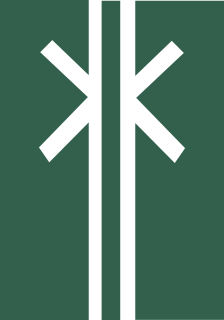 W
WThe Social Credit Party of Great Britain and Northern Ireland was a political party in the United Kingdom. It grew out of the Kibbo Kift, which was established in 1920 as a more craft-based alternative for youth to the Boy Scouts.
 W
WThe keffiyeh or kufiya also known as a ghutrah (غُترَة), shemagh, ḥaṭṭah (حَطَّة) or mashadah (مَشَدَة), is a traditional Arabian headdress, or what is sometimes called a habit, that originated in the Arabian Peninsula, and is now worn throughout the Middle East region. It is fashioned from a square scarf, and is usually made of cotton. The keffiyeh is commonly found in arid regions, as it provides protection from sunburn, dust and sand. Toward the end of the 1980s, the keffiyeh became a fashion accessory in the United States and, during the early 2000s it became very popular among teenagers in Tokyo, Japan, where it is often worn with camouflage-style clothing.
 W
WThe modern Chinese tunic suit is a style of male attire originally known in China as the Zhongshan suit after the republican leader Sun Yat-sen. Sun Yat-sen introduced the style shortly after the founding of the Republic of China (1912-1949) as a form of national dress with distinct political overtones. The four pockets are said to represent the Four Virtues of propriety, justice, honesty, and shame; and the five buttons the branches of China's government.
 W
WThe Francist Movement was a French Fascist and anti-semitic league created by Marcel Bucard in September 1933 that edited the newspaper Le Francisme. Mouvement franciste reached of membership of 10,000 and was financed by the Italian dictator, Benito Mussolini. Its members were deemed the francistes or Chemises bleues (Blueshirts), and gave the Roman salute.
 W
WThe Phrygian cap or liberty cap is a soft conical cap with the apex bent over, associated in antiquity with several peoples in Eastern Europe and Anatolia, including the Balkans, Dacia and Phrygia, where it originated. In first the American Revolution and then French Revolution, it came to signify freedom and the pursuit of liberty, although Phrygian caps did not originally function as liberty caps. The original cap of liberty was the Roman pileus, the felt cap of emancipated slaves of ancient Rome, which was an attribute of Libertas, the Roman goddess of liberty. In the 16th century, the Roman iconography of liberty was revived in emblem books and numismatic handbooks where the figure of Libertas is usually depicted with a pileus. The most extensive use of a headgear as a symbol of freedom in the first two centuries after the revival of the Roman iconography was made in the Netherlands, where the cap of liberty was adopted in the form of a contemporary hat. In the 18th century, the traditional liberty cap was widely used in English prints, and from 1789 also in French prints; by the early 1790s, it was regularly used in the Phrygian form.
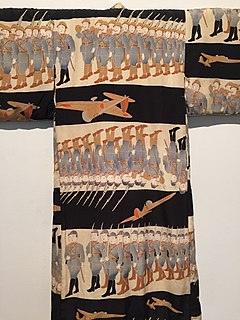 W
WKimono that carried designs depicting scenes from contemporary life became popular in Japan between 1900 and 1945. Now known as omoshirogara , during WW2, many of these designs depicted and reflected the military and political actions of Japan during its involvement in the war (1931-1945), and are commonly referred to as 'propaganda kimono'.
 W
WThe Red Shirts were a paramilitary organization, existing in the 1930s, founded by the atheist and anti-Catholic anticlerical Governor of Tabasco, Mexico, Tomás Garrido Canabal, during his second term. As part of their attempt to destroy the Church, they systematically destroyed church buildings. The group, created to carry out the governor's orders, takes its name from its uniform of red shirts, black pants, and black and red military caps. It consisted of men and women aged 15 to 30.
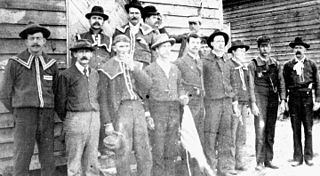 W
WThe Red Shirts or Redshirts of the Southern United States were white supremacist paramilitary terrorist groups that were active in the late 19th century in the last years of, and after the end of, the Reconstruction era of the United States. Red Shirt groups originated in Mississippi in 1875, when politically conservative private terror units adopted red shirts to make themselves more visible and threatening to Southern progressives, both whites and freedmen. Similar groups in the Carolinas also adopted red shirts.
 W
WRedshirts, also called Red coats or Garibaldini, are volunteers who followed the Italian patriot Giuseppe Garibaldi during his campaigns in Uruguay and Italy, and then his son Ricciotti in Greece and the Balkans from the 1840s to the 1910s. The name derived from the color of their shirts or loose fitting blouses that the volunteers, usually called Garibaldini, which were wore in lieu of a uniform.
 W
WThe Silver Legion of America, commonly known as the Silver Shirts, was an underground American fascist organization founded by William Dudley Pelley that was headquartered in Asheville, North Carolina and announced publicly on January 31, 1933. The group was effectively dissolved on December 8, 1941, when police called for the open arrest of any individuals associated with the group.
 W
WThe Social Credit Party of Great Britain and Northern Ireland was a political party in the United Kingdom. It grew out of the Kibbo Kift, which was established in 1920 as a more craft-based alternative for youth to the Boy Scouts.
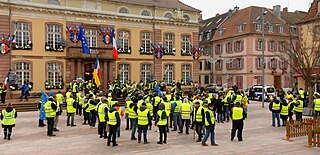 W
WThe yellow vests movement or yellow jackets movement is a populist, grassroots protest movement for economic justice that began in France in October 2018. After an online petition posted in May had attracted nearly a million signatures, mass demonstrations began on 17 November. The movement was initially motivated by rising fuel prices and a high cost of living; it claims that a disproportionate burden of the government's tax reforms were falling on the working and middle classes, especially in rural and peri-urban areas. The protesters have called for lower fuel taxes, a reintroduction of the solidarity tax on wealth, a minimum-wage increase, as well as the implementation of Citizens' initiative referendums, among other things. On 29 November 2018, a list of 42 demands was made public and went viral on social media, becoming de facto a structuring basis for the movement, covering a wide range of eclectic topics, mostly related to democracy, social and fiscal justice.
 W
WThe Yugoslav Radical Union was the ruling far-right party of Yugoslavia from 1934 until the 1941 coup d'état.